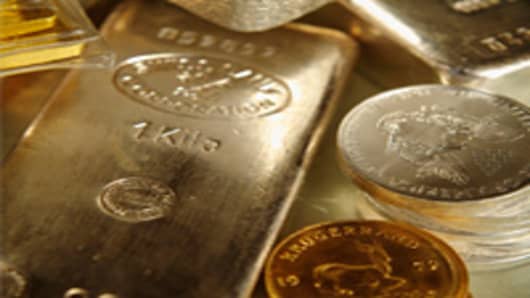There are a lot of reasons to invest in gold, but to ride the extraordinary, multi-year rally underway you don't need to go out and buy some coins or bullion and put it in your bank's safe deposit box.
Gold's low correlation with other asset classes, like stocks and bonds and even other commodities, for example, can help minimize volatility in an otherwise equity-heavy portfolio.
“We are still arguing that people should add gold to their portfolios as part of a diversification strategy,” says Katherine Klingensmith, a strategist for UBS Wealth Management Research. “There’s still quite a bit of concern about the structural integrity of the financial markets, so there are still plenty of folks looking for hedges against continued weakness in the global growth story.”




